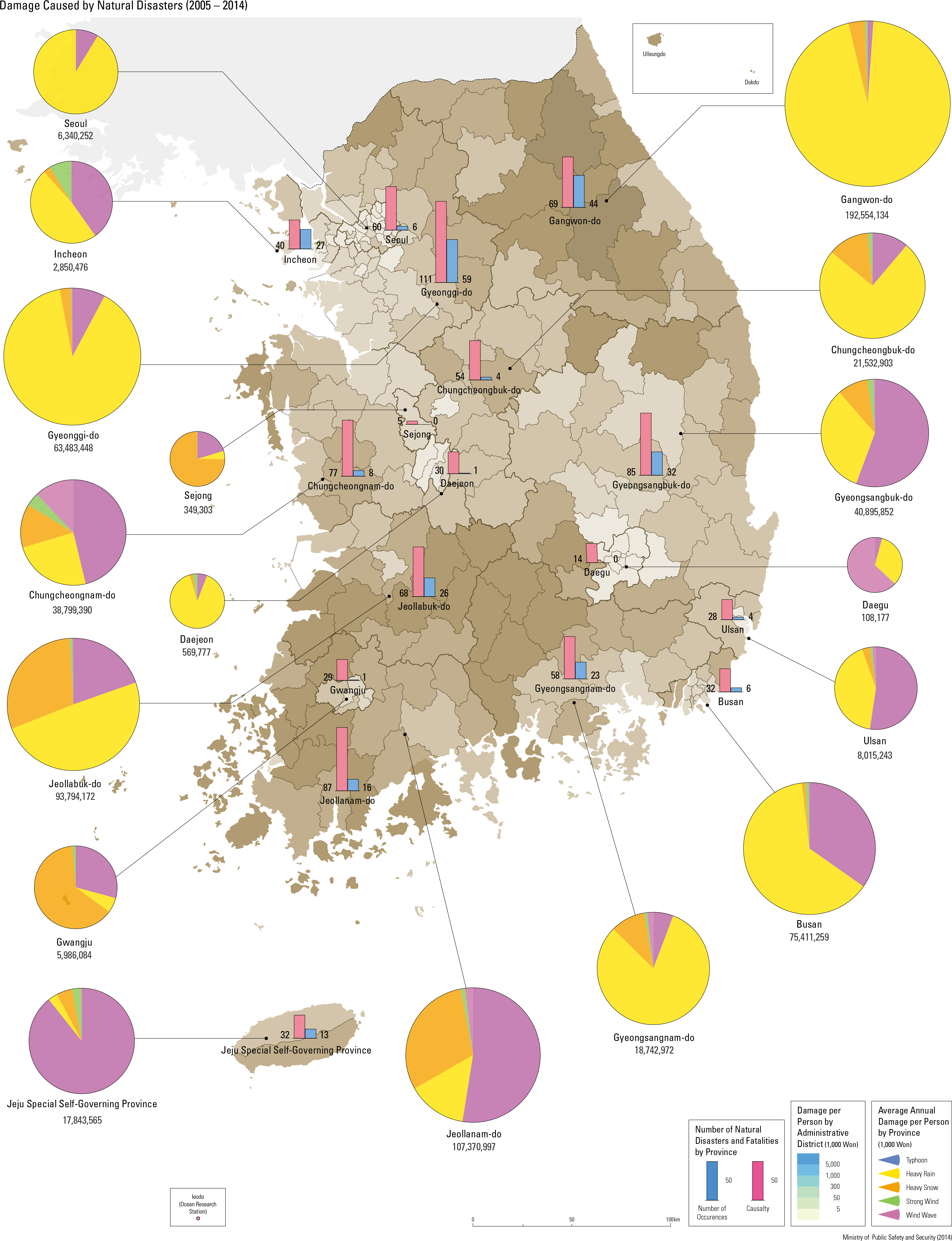English II
In recent days, natural disasters not only threat- en human safety, but also their magnitude has caused unprecedented damages. The severity and frequency of natural disasters are increasing while the summer is getting warmer, and the win- ter is getting colder due to the effects of global warming. Korea is frequently hit by heat waves, heavy rains, and typhoons in the summer, where- as heavy snows are quite frequent in occurrence in the winter. They often bring detrimental effects to Korea. The most critical natural disasters in Korea are typhoons and heavy rains but damage from heavy snows has also risen because of the increasing frequency of heavy snows. An increase in the number of heavy rain and snow events has been observed since 1991, and this increase was particularly remarkable since the early 2000s. In Korea, the scale of the damage caused by natural disasters varies and is much more fero- cious for certain typhoons and heavy rains. More than 1,000 persons were killed or disappeared due to the typhoon Thelma in 1987. Because of Ty- phoon Yanni in 1998, and the ooding struck the Honam region in 1989, 384 people were killed, and 307 disappeared. A huge number of victims suffered from floods and typhoons from 1984 to 1990. There were over 360 thousand flood victims around Seoul and Gyeonggi-do area in 1984. The incredibly disastrous ood occurred in 1990 left more than 200 thousand victims and one trillion-won worth of damage. Over the past 30 years, the most adverse natural disaster that ever happened in Korea was Typhoon Rusa occured in 2002, whose damage costed the nation more than 8 trillion-won. In 2003, Typhoon Maemi caused a loss of more than 6 trillion-won. Typhoon Ewin- iar in icted more than 2 trillion-won in economic losses in 2006. Since then, natural disasters have in icted less serious damage, causing 180 billion- won-worth property damage in 2014. Damage caused by natural disasters has been slightly increasing since 2000. This is because heavy rains and typhoons have intensified as a result of global warming, and inflation has led to increases in the cost of living. However, the number of casualties, disappearances, and victims has been gradually decreasing since people are more aware of natural disasters than in the past. Also, the government has invested heavily in pre- venting damage and health hazards from natural disasters. In addition, forecasting technologies have improved over the years, which has played a greater role in preparing and mitigating the dam- ages from natural disasters.
page_2 |
